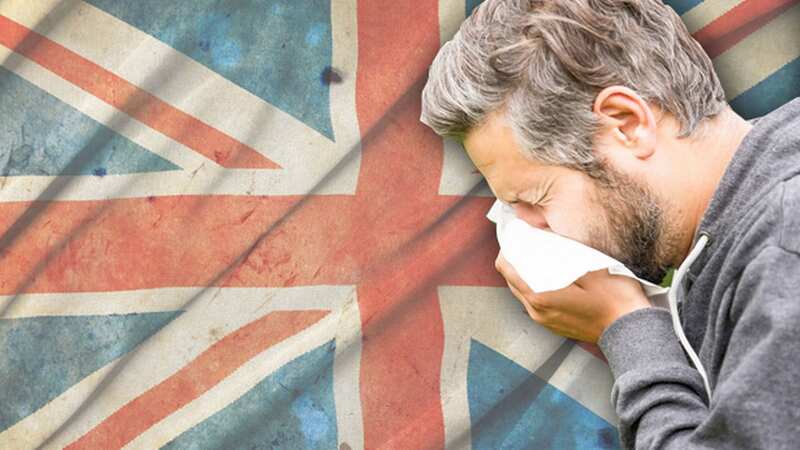Symptoms of forgotten illnesses as Victorian diseases surge in UK

There are many illnesses we think are consigned to history - but sadly they're not, with some making an unwelcome comeback in the UK.
Numerous Victorian-era health conditions and diseases you'd sooner associate with 19th century rocking horses and Charles Dickens - rather than today's smartphones and social media - are surging.
But why? Experts believe an unforeseen post-Covid plunge in vaccine uptake could be to blame, and they are warning people to remain vigilant.
Want to get the latest health news direct to your inbox? Sign up for the Mirror Health newsletter
The message comes after the number of teenagers vaccinated against conditions linked to the Victorian era, including diphtheria and polio, dropped by 7 per cent per cent in 2022.
 Teachers, civil servants and train drivers walk out in biggest strike in decade
Teachers, civil servants and train drivers walk out in biggest strike in decade
Data from NHS Digital showed that 'Victorian diseases' were responsible for almost 10,000 hospitalisations that year. And now, some of those illnesses - that many believed dwelled only in the history books - are surging.
Let's take a look at some of the main ones to watch for:
Diphtheria
Extremely contagious, the bacterial infection diphtheria was highly prevalent in Victorian times. It can be a frightening illness which can cause heart problems, difficulty breathing, and sometimes even death.
Scientists believe UK outbreaks of the infection are 'most likely' to have been brought into the country from Afghanistan. Thankfully, diphtheria is still relatively rare in the UK, with babies and children being routinely vaccinated against the bug for more than 80 years.
With that said, anyone not inoculated is highly susceptible to the illness, which can cause awful ulcers on the skin if antibiotics aren't used quickly enough.
A recent report from the European Society of Clinical Microbiology and Infectious Diseases highlighted how 73 cases of the disease were recorded in England last year overall - which is up from the dozen cases the previous year.
Signs and symptoms:
Once infected, it can take two to five days for symptoms to make themselves known.
Key signs, according to the NHS, include:
Difficulty breathing and swallowing
 Greggs, Costa & Pret coffees have 'huge differences in caffeine', says report
Greggs, Costa & Pret coffees have 'huge differences in caffeine', says report
- A thick grey-white coating that may cover the back of your throat, nose and tongue
- Sore throat
A high temperature (fever)
- Swollen glands in your neck
- Pus-filled blisters on your legs, feet and hands
- Big ulcers surrounded by red, sore-looking skin
 Tuberculosis has many symptoms, including extreme tiredness and night sweats. (Getty Images)
Tuberculosis has many symptoms, including extreme tiredness and night sweats. (Getty Images)Tuberculosis
Tuberculosis - often known by the abbreviation TB - is a bacterial infection which is spread through inhaling tiny droplets from the coughs or sneezes of an infected person.
Health officials have warned the number of tuberculosis deaths are on the rise across Europe - after declining for almost 20 years. Experts think the surge is down to disrupted treatment and diagnostic services during the Covid pandemic.
The World Health Organization's (WHO) European Region - which is made up of 53 countries - saw 27,300 people die from tuberculosis in 2021, compared with 27,000 deaths in 2020. This was the first time in two decades the downward trend was broken. The two most affected countries were Russia and Ukraine, with around 4,900 and 3,600 deaths respectively.
Signs and symptoms:
TB is potentially a very serious condition, but thankfully it can be cured with the right antibiotics.
The NHS says symptoms include:
Extreme tiredness or fatigue
- Breathlessness that gradually gets worse
- Lack of appetite and weight loss
A persistent cough that lasts more than three weeks and often brings up phlegm, which may be bloody
- Night sweats
A high temperature
Syphilis
Syphilis used to be rife in this country, with a fifth of 19th century Londoners said to have picked it up before they turned 35. A nasty infection transmitted through sex, it can cause blindness and brain damage if left untreated.
But while many may think the illness is all but gone, it isn't. There has, in fact, been a concerning rise in cases.
The UKHSA revealed there were 7,506 cases of infectious syphilis reported in 2021, which is an alarming 8.4 per cent increase compared to 2020 - when there were 6,923 new cases.
And the same upsurge in the bacterial infection has been seen across the globe since the pandemic ended and the world began to open up again
“It's pretty simple - more sexually transmitted infections occur when people are having more unprotected sex,” said Dr Mike Saag, an infectious disease expert at the University of Alabama at Birmingham. Dr Saag said there could have been a surge in sexual activity as people emerged from Covid-19 lockdowns as 'people felt liberated'.
Signs and symptoms:
Anyone with primary syphilis may first notice a small, painless sore or ulcer. The majority will only have one such sore, but some people may develop more. The afflicted could also have swollen glands in their neck, groin or armpits.
After a few weeks have passed, a sufferer may notice:
White patches in the mouth
- Small skin growths; on women these often appear on the vulva and for both men and women they may appear around the anus
A blotchy red rash that can appear anywhere on the body, but often seen on the soles of the feet or palms of the hands
- Flu-like symptoms, such as tiredness, joint pains headaches and a high temperature
Occasionally, patchy hair loss
- Swollen glands
Scabies
Scabies is an itchy condition caused by tiny mites burrowing into your skin. While the infection may not be serious, it does require rapid treatment.
Cases have been on the rise in Britain, with public health chiefs recently warning people to be on the look-out for symptoms. Taking quick action can help prevent it becoming a more widespread issue, says Norfolk's Director for Public Health, Stuart Lines.
He said: "We have seen cases of scabies reported elsewhere in the country and because we know that the sooner a case is treated, the sooner it clears up, we advise everyone to be vigilant, particularly children and young people in educational settings."
Thankfully, recent data on the infection rate of scabies in the UK points towards the bug loosening its grip - with cases falling. The UK Health Security Agency (UKHSA) reported figures on the parasite, which are combined with pubic lice, suggest that cases have dropped by 61 per cent been 2017 and 2021 - down from 2,249 cases to a mere 874.
The data for 2022 and beyond has not yet been made public.
Tell-tale signs:
Scabies is still one of the most common dermatological conditions, making up a substantial proportion of skin disease in developing countries. It is something anyone can get, and it requires prompt treatment to stop it spreading.
According to the NHS, the symptoms of scabies are:
- A raised rash or spots
Intense itching, particularly at night
The tell-tale spots may look red in colour, and could be trickier to see on dark skin, but you should be able to feel them. The accompanying scabies rash typically spreads across the entire body, though doesn't usually appear on the head or neck. It can, however, appear on the head in older people, young children and those with a weakened immune system
Read more similar news:
Comments:
comments powered by Disqus

































